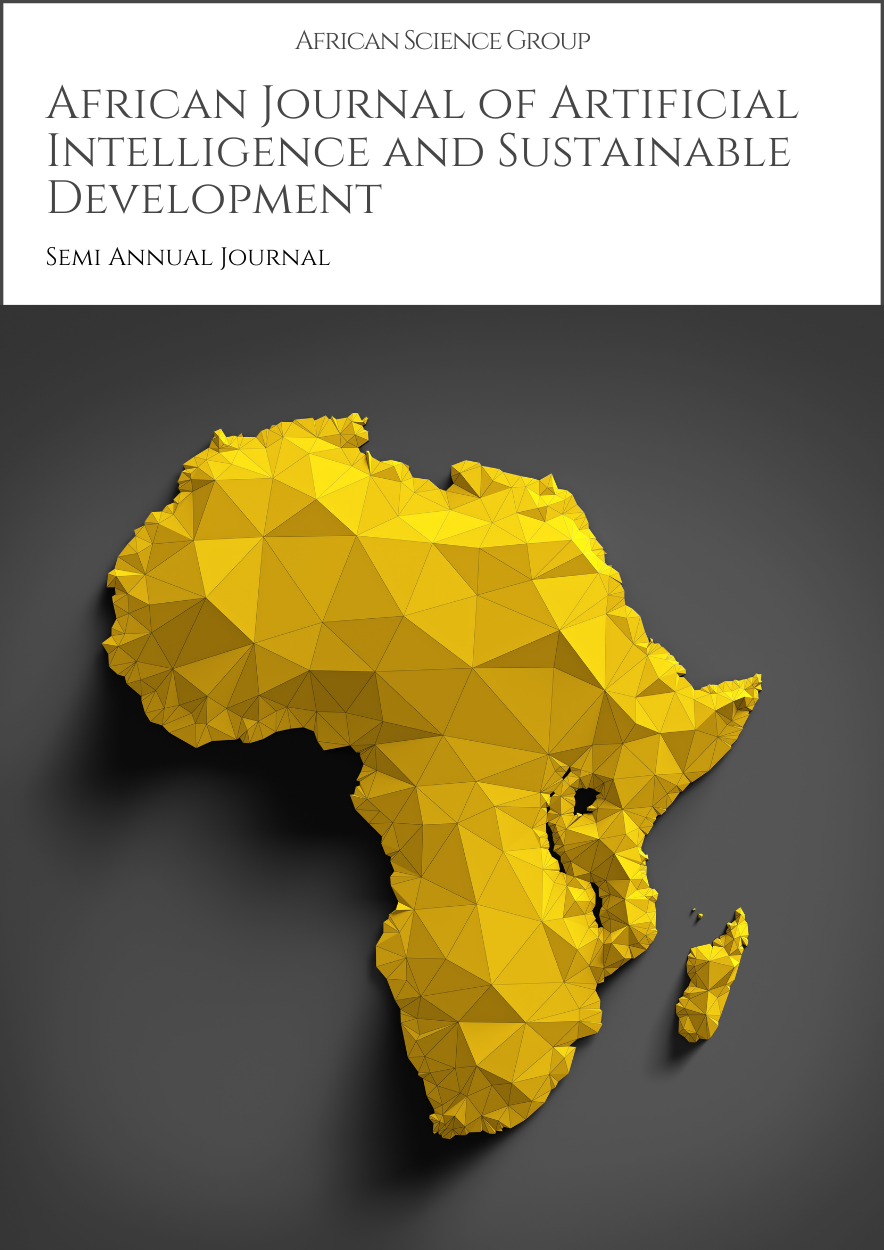Artificial Intelligence in Enterprise Decision-Making: Bridging the Gap Between Predictive Insights and Organizational Strategy
Published 02-08-2022
Keywords
- artificial intelligence,
- enterprise decision-making,
- predictive analytics,
- machine learning

This work is licensed under a Creative Commons Attribution-NonCommercial-ShareAlike 4.0 International License.
Abstract
The integration of artificial intelligence (AI) in enterprise decision-making represents a transformative shift in the strategic capabilities of organizations, enabling them to translate vast amounts of data into actionable insights. This research delves into the mechanisms through which AI technologies, particularly predictive analytics, machine learning, and natural language processing, enhance organizational decision-making processes. By analyzing how AI augments predictive insights to inform strategic actions, this paper establishes the critical linkage between data-driven predictions and their implementation in shaping enterprise-wide strategies. The study begins by exploring the foundational components of AI in decision-making, including data preprocessing, model training, and evaluation, which collectively underpin the predictive capabilities essential for deriving meaningful insights from complex datasets.
Subsequently, the paper addresses how AI systems facilitate real-time and scalable decision-making through their ability to process and analyze dynamic datasets, uncovering patterns and correlations that are often imperceptible through conventional analytical methods. AI-driven predictive insights empower enterprises to anticipate market trends, identify emerging risks, and optimize resource allocation, thereby fostering agility and competitiveness in rapidly evolving business landscapes. Moreover, the research examines the integration of AI within organizational decision-making frameworks, emphasizing how AI interfaces with human decision-makers through explainable AI (XAI) models and interactive dashboards to enhance interpretability and trust. This interaction is pivotal in bridging the gap between complex algorithmic outputs and strategic alignment with organizational objectives.
A significant portion of the study is dedicated to examining the challenges associated with leveraging AI for enterprise decision-making. These challenges include data silos, algorithmic biases, and the inherent complexities of aligning AI-generated recommendations with the multifaceted priorities and constraints of an organization. Addressing these barriers necessitates robust governance frameworks, interdisciplinary collaboration, and continual model refinement to ensure the reliability and ethical integrity of AI-driven insights. Furthermore, the study explores case studies that illustrate the successful implementation of AI in diverse sectors, such as financial services, supply chain management, and healthcare, demonstrating the tangible impact of AI on improving decision-making quality and achieving measurable organizational outcomes.
The research also delves into the strategic implications of adopting AI technologies, highlighting how enterprises must recalibrate their decision-making structures to fully leverage the potential of AI. This recalibration involves fostering a culture of data literacy, enhancing digital infrastructure, and promoting the adoption of adaptive decision-making practices that align with the iterative and evolving nature of AI systems. The discussion extends to the role of AI in facilitating long-term strategic planning, including scenario analysis and risk assessment, which enable organizations to navigate uncertainty and seize emerging opportunities.
Downloads
References
- T. M. Mitchell, "Machine Learning," McGraw-Hill, 1997.
- I. Goodfellow, Y. Bengio, and A. Courville, "Deep Learning," MIT Press, 2016.
- H. Chen, R. H. L. Chiang, and V. C. Storey, "Business Intelligence and Analytics: From Big Data to Big Impact," MIS Quarterly, vol. 36, no. 4, pp. 1165–1188, Dec. 2012.
- R. B. Cialdini, "Influence: The Psychology of Persuasion," Revised ed., Harper Business, 2006.
- A. Ng and K. Katanforoosh, "Artificial Intelligence for Business," Stanford Online Course, 2020.
- J. Dean et al., "Large Scale Distributed Deep Networks," in Advances in Neural Information Processing Systems, vol. 25, 2012.
- M. Jordan and T. Mitchell, "Machine Learning: Trends, Perspectives, and Prospects," Science, vol. 349, no. 6245, pp. 255–260, July 2015.
- D. Kahneman, "Thinking, Fast and Slow," Farrar, Straus and Giroux, 2011.
- S. Makridakis, E. Spiliotis, and V. Assimakopoulos, "Statistical and Machine Learning Forecasting Methods: Concerns and Ways Forward," PLoS ONE, vol. 13, no. 3, Mar. 2018.
- L. Deng and D. Yu, "Deep Learning: Methods and Applications," Foundations and Trends® in Signal Processing, vol. 7, no. 3–4, pp. 197–387, Jun. 2014.
- R. Sutton and A. Barto, "Reinforcement Learning: An Introduction," 2nd ed., MIT Press, 2018.
- D. Silver et al., "Mastering the Game of Go with Deep Neural Networks and Tree Search," Nature, vol. 529, pp. 484–489, Jan. 2016.
- A. Gawer and M. A. Cusumano, "Industry Platforms and Ecosystem Innovation," Journal of Product Innovation Management, vol. 31, no. 3, pp. 417–433, May 2014.
- B. Marr, "Artificial Intelligence in Practice: How 50 Companies Used AI and Machine Learning to Solve Problems," Wiley, 2019.
- Y. Lecun, Y. Bengio, and G. Hinton, "Deep Learning," Nature, vol. 521, pp. 436–444, May 2015.
- J. Manyika et al., "Big Data: The Next Frontier for Innovation, Competition, and Productivity," McKinsey Global Institute, May 2011.
- K. R. Murphy, "Machine Learning: A Probabilistic Perspective," MIT Press, 2012.
- H. Wang et al., "Explainable AI in Fintech: A Survey," in Proceedings of the 2021 International Conference on Data Science and Engineering, Jan. 2021, pp. 45–50.
- G. Marcus, "The Next Decade in AI: Four Steps Towards Robust Artificial Intelligence," AI Magazine, vol. 39, no. 3, pp. 25–35, Oct. 2018.
- P. Domingos, "The Master Algorithm: How the Quest for the Ultimate Learning Machine Will Remake Our World," Basic Books, 2015.

